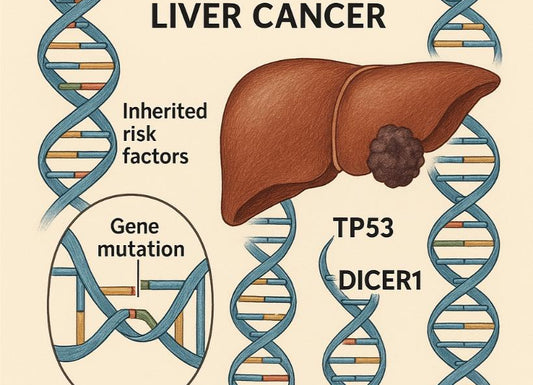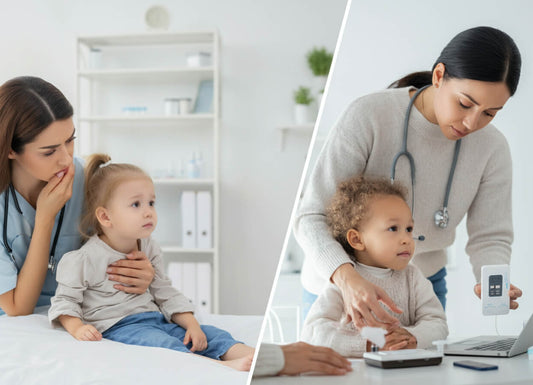What Are the 7 Signs Your Liver Is Dying?
 Written By
Jaclyn P. Leyson-Azuela, RMT, MD, MPH
Written By
Jaclyn P. Leyson-Azuela, RMT, MD, MPH

The liver is one of your body’s hardest-working organs. It has multiple functions, such as filtering toxins, processing nutrients, and keeping your body balanced. When it begins to fail, there will be small changes seen or signs that it is failing. It may include changes on your skin, energy levels, or digestion can be warning signs. Understanding these symptoms early helps you take quick, effective steps toward care and recovery.
Key Insights
-
Yellow eyes and skin (jaundice) signal excess bilirubin.
-
Abdominal swelling (ascites) means fluid buildup from liver scarring.
-
Chronic fatigue often shows liver dysfunction.
-
Easy bruising happens when clotting proteins decrease.
-
Dark urine and pale stools suggest blocked bile flow.
-
Hepatic encephalopathy can cause confusion or tremors.
-
Urine test strips can detect early bilirubin changes at home.
What Are the First Signs of Advanced Liver Damage?
When your liver starts to fail, your body will send early signs. These signs can show up in your skin, energy levels, and digestion. It is important to recognize the signs early as it may help you get care before the damage becomes severe.

What causes jaundice and yellow eyes?
You may notice yellowing in your skin or eyes when your liver can’t clear bilirubin, a yellow pigment made when red blood cells break down. The buildup means the liver isn’t processing toxins well.
-
Jaundice is often one of the first signs seen in liver failure
-
It can also cause skin itchiness that is deep-seated and is not relieved by standard antihistamines.
-
Dark urine and pale stools may also be found in these patients
-
The yellowing usually starts in the eyes, then spreads to the skin
If you notice these signs or changes, consult your doctor immediately. High bilirubin may indicate hepatitis, cirrhosis, or advanced liver disease.
Why does the abdomen swell in advanced liver disease?

A swollen belly can mean fluid buildup in the abdomen, which is otherwise called as ascites. This pressure happens when scar tissue blocks normal blood flow through the liver.
Characteristics:
-
The swelling may feel tight or heavy on the abdominal area
-
In later stages, it can make it hard to breathe or move comfortably
-
You might also notice swelling in your ankles or legs
Your doctor may treat your ascites with diuretics or drainage, but the condition usually signals serious liver injury that needs medical care.
Is persistent fatigue related to liver problems?
Yes, fatigue happens when the liver can’t filter toxins or store energy properly. Your body feels drained even with rest.
-
People often describe it as exhaustion that doesn’t go away
-
Fatigue may come from inflammation, anemia, or hormonal imbalances caused by liver dysfunction
-
You may also feel weak, lightheaded, or may lose focus easily
Long-term fatigue, especially with nausea or weight loss, should not be ignored.
What are other common early symptoms?
Other early signs of liver failure include:
-
Loss of appetite and nausea
-
Unexpected weight loss
-
Vomiting, especially after meals
-
Abdominal discomfort on the right upper side just under your ribs
These symptoms often worsen gradually. Keep track of changes in your energy, digestion, and appearance to share with your doctor. Early testing and periodic monitoring to confirm if your liver enzymes are abnormal, which may mean that it is struggling to function properly.
How Does Liver Failure Affect Your Body?
Your liver touches almost every system in your body. When it fails, symptoms appear in the blood, brain, skin, and digestive tract.
Why does liver failure lead to easy bruising or bleeding?
The liver makes proteins that help your blood clot. When it’s damaged, these proteins decrease, and even small bumps can cause bruises or bleeding.
Some signs may include:
-
Nosebleeds or gum bleeding appearing suddenly
-
Women may notice heavier menstrual periods
-
Internal bleeding in advanced cases can cause vomiting blood or black stools
Doctors often check INR (International Normalized Ratio) to measure blood clot function in liver disease.
What changes in urine and stool signal liver distress?
Your urine and stool can reveal a lot about liver function. The following may signal liver distress and can be helpful signs to detect the condition early:
-
Dark urine may signal bilirubin accumulation
-
Pale or clay-colored stools, which means bile flow to the digestive system is blocked
-
A strong smell or foamy characteristics of the urine can demonstrate protein or bile leakage
If you notice these changes for more than a few days, talk with a healthcare provider. Some people use at-home urine test strips to check for bilirubin or urobilinogen levels between visits.
What is hepatic encephalopathy and how does it appear?
When toxins build up in the blood, they reach the brain and cause hepatic encephalopathy. This condition affects mood, memory, and coordination.
-
Early signs include confusion, irritability, and forgetfulness
-
In more advanced settings, people may develop tremors, slurred speech, or even trouble encephalopathy
-
Severe cases can cause coma
If these symptoms occur with yellowing skin or dark urine, seek emergency care immediately.
When Should You Get Tested for Liver Problems?
Testing helps find liver issues before they cause irreversible harm. Doctors use lab panels, imaging, and symptom reviews to guide treatment.
What diagnostic lab tests are used by doctors?
Doctors order a liver function test (LFT) to check enzyme and protein levels. Common markers include:
-
ALT (alanine transaminase) and AST (aspartate transaminase) – high levels mean liver cell injury
-
ALP (alkaline phosphatase) – high levels mean there are bile duct issues
-
Bilirubin – high levels cause jaundice
-
Albumin – low levels show poor protein production
Imaging tests like ultrasound or CT scan may be used to view scarring or swelling.
When should you seek emergency medical care?

Go to the ER if you experience:
-
Severe abdominal pain with swelling
-
Yellowing skin with confusion
-
Blood in vomit or stool
-
Sudden shortness of breath or fainting
These symptoms could mean acute liver failure, which needs urgent hospital care. Do not wait for an appointment if your condition changes quickly.
How long does liver failure progression usually take?
Progression depends on the cause and lifestyle factors.
-
Acute liver failure can occur in days. And, it is often caused by toxicity or infection
-
Chronic liver disease develops over months or years due to hepatitis, alcohol use, or fatty liver disease
-
Early detection and treatment can stop or reverse damage
Regular testing can catch mild enzyme changes before symptoms appear.
Can At-Home Urine Test Strips Detect Liver Issues?
Home testing helps you monitor your liver health between doctor visits. Urine test strips can reveal chemical markers linked to early liver damage.
Which markers can urine tests reveal (e.g., bilirubin, urobilinogen)?
At-home urine test strips can detect:
-
Bilirubin – high levels suggest liver injury or bile duct blockage
-
Urobilinogen – either low or high levels may indicate or suggest liver stress
-
Protein – may suggest kidney involvement in advanced liver disease
Consistent tracking over time can show if your liver function changes.
How should you use an at-home test?
Follow these steps to ensure you get accurate results:
-
Collect urine in a sterile or clean container (often testing kits include a urine collection container)
-
Dip the strip on the sample and wait for color change (usually within 30 to 60 seconds depending on the manufacturer’s instructions)
-
Compare the color to the chart included on the package, but some testing kits come with subscription-based app that AI interprets in real time allowing more convenience and faster results
-
Keep a journal where you will keep your results and track for some changes or fluctuations
If bilirubin or urobilinogen levels stay high, schedule a medical test for confirmation.
What are the limitations of home testing?
Urine strips are screening tools, not full diagnostics.
-
They can’t measure liver enzymes like ALT or AST.
-
Dehydration or medication can change urine color and affect readings.
-
False positives may occur if strips are expired or stored poorly.
Use these tests as part of routine monitoring, not as replacements for medical visits.
What Steps Should You Take If You Notice Symptoms?
If you see yellow skin, swelling, or dark urine, act quickly. Early response can prevent liver failure from worsening.
How to prepare for a doctor’s visit?
Bring your journal with you and clear notes of all the symptoms that you felt. If you have done lab tests on top of your home test results, bring them also with you.
-
Monitor and write down when each symptom started and if it has undergone changes (e.g., worsening) recently
-
Include all the medications that you take, such as vitamins, herbal supplements, and maintenance medications and disclose any alcohol intake as well
-
Ask about testing for hepatitis, fatty liver, or autoimmune liver disease if it is warranted. Your doctor will know.
Being prepared helps your doctor make faster, accurate decisions.
Is liver damage reversible?
Yes, mild to moderate liver damage can improve with proper treatment and care. To do so, you need to consider the following:
-
Stop drinking alcoholic beverages
-
Avoid certain over-the-counter medications that can make things worse
-
Lose weight as it may help reverse nonalcoholic fatty liver disease (NAFLD)
-
Managing conditions like diabetes can reduce the strain on your liver
However, once cirrhosis has set in or develops, scarring becomes permanent though symptoms can be managed.
Lifestyle changes to support liver health
Simple changes can protect your liver and help it recover:
-
Eat a balanced diet rich in vegetables, lean protein, and whole grains
-
Limit alcohol and sugar-sweetened drinks
-
Exercise regularly to maintain a healthy weight
-
Stay hydrated and avoid unnecessary supplements
-
Use at-home urine strips to track bilirubin or urobilinogen if recommended by your doctor
Healthy habits plus early detection can slow or stop disease progression.
Final Takeaway
Your liver is vital to detoxification, digestion, and metabolism. Recognizing these 7 signs of liver failure early—jaundice, abdominal swelling, fatigue, nausea, dark urine, bruising, and mental confusion—can save your life. Use medical guidance and consider simple home tools like urine test strips for ongoing health awareness.
Related Resources
Can Liver Function Tests Be Normal with Cirrhosis?
Can You Get Disability for Cirrhosis of The Liver?
Quick Summary Box
-
Early detection saves lives. Don’t ignore yellow skin, swelling, or dark urine.
-
Use simple tools. At-home urine test strips help track bilirubin levels.
-
Seek medical help fast. See a doctor if symptoms appear or worsen.
-
Protect your liver. Limit alcohol, eat balanced meals, and stay hydrated.
-
Regular monitoring matters. Testing ensures early treatment and better outcomes.
References
Chiejina, M., & Hrishikesh Samant. (2023). Ascites. Nih.gov; StatPearls Publishing. https://www.ncbi.nlm.nih.gov/books/NBK470482/
Common Characteristics of Liver Disease. (n.d.). Www.hopkinsmedicine.org. https://www.hopkinsmedicine.org/health/conditions-and-diseases/common-characteristics-of-liver-disease
Hoilat, G. J., & John, S. (2023). Bilirubinuria. PubMed; StatPearls Publishing. https://www.ncbi.nlm.nih.gov/books/NBK557439/
John Hopkins Medicine. (2019). Chronic Liver Disease/Cirrhosis. John Hopkins Medicine. https://www.hopkinsmedicine.org/health/conditions-and-diseases/chronic-liver-disease-cirrhosis
Lowe, D., Sanvictores, T., Zubair, M., & John, S. (2023, October 29). Alkaline Phosphatase. Nih.gov; StatPearls Publishing. https://www.ncbi.nlm.nih.gov/books/NBK459201/
Mandiga, P., Foris, L. A., Kassim, G., & Bollu, P. C. (2025, January 20). Hepatic Encephalopathy. National Library of Medicine; StatPearls Publishing. https://www.ncbi.nlm.nih.gov/books/NBK430869/
Moriles, K. E., Zubair, M., & Azer, S. A. (2020). Alanine Amino Transferase. In www.ncbi.nlm.nih.gov. StatPearls Publishing. https://www.ncbi.nlm.nih.gov/books/NBK559278/
Shah, N. J., Royer, A., & John, S. (2023). Acute liver failure. PubMed; StatPearls Publishing. https://www.ncbi.nlm.nih.gov/books/NBK482374/
Sharma, A., & Nagalli, S. (2023, July 3). Chronic Liver Disease. PubMed; StatPearls Publishing. https://www.ncbi.nlm.nih.gov/books/NBK554597/
Shikdar, S., & Bhattacharya, P. T. (2023). International Normalized Ratio (INR). Nih.gov; StatPearls Publishing. https://www.ncbi.nlm.nih.gov/books/NBK507707/

Jaclyn P. Leyson-Azuela, RMT, MD, MPH, is a licensed General Practitioner and Public Health Expert. She currently serves as a physician in private practice, combining clinical care with her passion for preventive health and community wellness.




